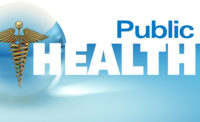Pool chemicals send thousands to emergency room each year
Victims are often children

 Injuries from pool chemicals led to nearly 5,000 emergency room visits in 2012, according to a study released last week by the Centers for Disease Control and Prevention (CDC).
Injuries from pool chemicals led to nearly 5,000 emergency room visits in 2012, according to a study released last week by the Centers for Disease Control and Prevention (CDC).
Nearly half of these preventable injuries were in children and teenagers and more than a third occurred at a home. Pool chemical injuries were most common during the summer swim season, from Memorial Day to Labor Day, and almost half occurred on weekends.
“Chemicals are added to the water in pools to stop germs from spreading. But they need to be handled and stored safely to avoid serious injuries,” said Michele Hlavsa, chief of CDC’s Healthy Swimming Program.
Residential pool owners and public pool operators can follow these simple and effective steps to prevent pool chemical injuries:
- Read and follow directions on product labels.
- Wear appropriate safety equipment, such as goggles and masks, as directed, when handling pool chemicals.
- Secure pool chemicals to protect people and animals.
- Keep young children away when handling chemicals.
- NEVER mix different pool chemicals with each other, especially chlorine products with acid.
- Pre-dissolve pool chemicals ONLY when directed by product label.
- Add pool chemical to water, NEVER water to pool chemicals.
The study analyzed data from the U.S. Consumer Product Safety Commission’s National Electronic Injury Surveillance System (NEISS). NEISS captures data on injuries related to consumer products from about 100 hospital emergency departments nationwide. The NEISS data can then be used to calculate national estimates.
May 19–25, 2014 is Recreational Water Illness and Injury (RWII) Prevention Week. The theme for RWII Prevention Week 2014 is Healthy and Safe Swimming: We’re in it Together. It focuses on the role of swimmers, aquatics and beach staff, residential pool owners, and public health officials in preventing drowning, pool chemical injuries, and outbreaks of illnesses.
Chlorine and bromine do not kill germs instantly; most are killed within minutes. So it is important that everyone help keep germs out of the water in the first place by not swimming when ill with diarrhea and taking kids on bathroom breaks. Protect yourself by not swallowing pool water.
For more information about healthy swimming, visit www.cdc.gov/healthyswimming.
Looking for a reprint of this article?
From high-res PDFs to custom plaques, order your copy today!





